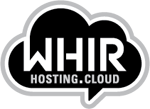This article originally appeared at The WHIR
A former VMware engineer has brought what he learned from years of working with enterprise clients on their cloud needs to a new company that came out of stealth this week. ZeroStack, co-founded by Ajay Gulati, CEO, launched on Wednesday to make consuming private clouds as easy as possible without forcing enterprises to relinquish control.
Along with co-founder and CTO Kiran Bondalapati, who was founding engineer atBromium, Gulati founded ZeroStack last year to help enterprises deploy private clouds without needing specific cloud expertise. The team includes senior employees from VMware and early employees from companies including Nutanix, Google andRiverbed.
The company had its first version ready in May, and started doing customer deployments in June 2015. On Wednesday, ZeroStack also disclosed $5.6 million in Series A funding led by Foundation Capital, and appointed Mark Leslie, founder and CEO, Veritas, to the board.
“[W]e are disrupting the private cloud market with a unique solution that can provide self-service cloud to enterprises in literally 15 minutes versus three to six months that it takes to build a private cloud and stitch together hardware and software technologies today,” Gulati said in an interview with the WHIR.
To give enterprises simple deployment coupled with maximum control, ZeroStack combines on-premise deployment and a SaaS platform. The ZeroStack Cloud Platform offers compute, storage, networking and management software, according to a press release. The cloud platform is built on OpenStack and consists of the ZS1000 hyper-converged system and the ZeroStack SaaS platform, which provides monitoring, troubleshooting, capacity planning and chargeback.
“When we started ZeroStack we looked at the existing two dominant cloud models where one is a private cloud that comes with high operational complexity…but once you set it up you have complete control, it’s behind your firewall, you have much better performance,” he said. “You look at public cloud on the other hand that has no operational complexity for the end users, there are no infrastructure decisions that you have to make, the vendor has already made and they are providing this as a service. But now everything is out of your control you have unpredictable performance. ”
“In my mind these are two extreme scenarios where in one case you have complete control and headaches, and in the other scenario no control and no headache. At ZeroStack what we have built is a new way of deploying cloud that gives you the best of both of these options. ”
ZeroStack is targeting two kinds of markets with its private cloud solution: the first is tech companies with 50-1000 developers, and the second is mid-to-large enterprises in non-technical sectors including education, media, pharmaceutical and retail. Gulati said that the fact that ZeroStack takes out a lot of the complexity of building a private cloud is particularly appealing to these less technical users. Nearly half of developers prefer using an on-premises, private cloud for development over public clouds like AWS or Azure, according to a recent report.
“The solution doesn’t require any cloud experts to operate,” he said. “In order to build a private cloud with any stack…you have to hire experts to do that. This is not something regular IT in a company can do.”
Gulati said that another benefit to ZeroStack is users can “start really small…and scale based on demand” which saves enterprises money by not needing to invest a lot upfront.
This first ran at http://www.thewhir.com/web-hosting-news/zerostack-comes-out-of-stealth-to-help-enterprises-take-control-simplify-private-cloud






